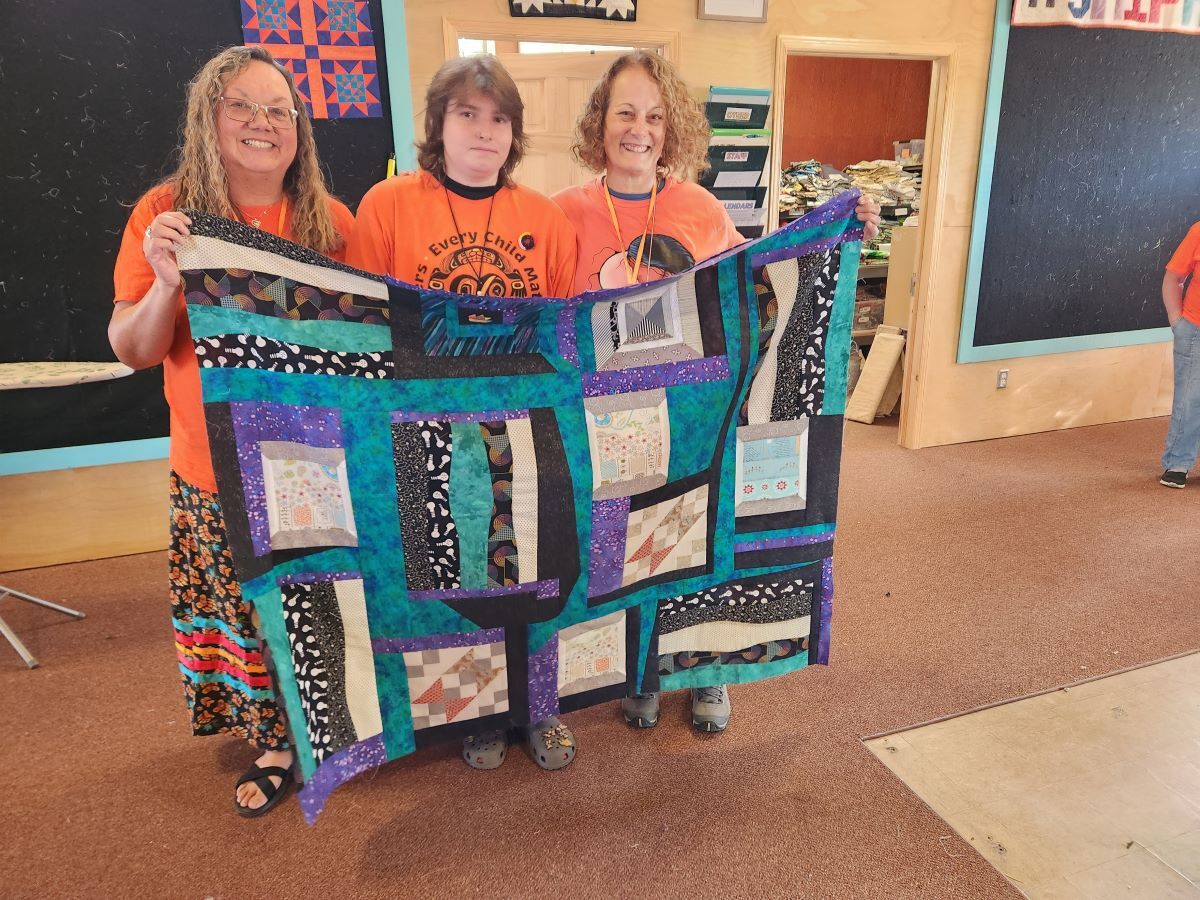Release Date: October 29th, 2025Called to Reconciliation
- by Ruth Boehm
Vanessa Grenier was inspired to make a quilt as an act of healing and reconciliation. In response to the history of residential schools in Canada and spurred on by the discovery of possible remains of 215 children at a former residential school in Kamploops BC in 2021, she wanted to do something. She is a quilter and so she began to quilt. She started with one quilt for a survivor. Over 8000 quilts have now been made and given to survivors of residential schools and those impacted by the Sixties Scoop.
 We have been mandated to be agents of reconciliation. According to 2 Corinthians 5:18 - 18 All this is from God, who reconciled us to himself through Christ and has given us the ministry of reconciliation; 19 that is, in Christ God was reconciling the world to himself,[f] not counting their trespasses against them, and entrusting the message of reconciliation to us.
We have been mandated to be agents of reconciliation. According to 2 Corinthians 5:18 - 18 All this is from God, who reconciled us to himself through Christ and has given us the ministry of reconciliation; 19 that is, in Christ God was reconciling the world to himself,[f] not counting their trespasses against them, and entrusting the message of reconciliation to us.
The message has been entrusted to us. But HOW do actually begin the work we are called to do. Sometimes the needs and the work seems impossible.
I was privileged to attend the Quilts for Survivors retreat in Timmins, Ontario, September 27-30, 2025. My mother, Leah Boehm, has attended for three years and is committed to this loving work of healing.
I am not a quilter. So, I was nervous about going to this retreat. I don’t have the skills to do what is expected.
When we arrived in South Porcupine just outside of Timmins we found the building that has been given for Quilts for Survivors to use. It is called “The Place that Gives Love.” It is a deconsecrated church building from the Anglican diocese. All the pews have been removed and replaced with long tables that hold six sewing machines. In the centre of the room there are cutting tables, 5 ironing tables, and at least 4 or 5 design boards. In the basement are three long arm quilting machines and several people doing machine quilting. A small room of donated fabrics is at the back, and a shelf full of remnants organized by colour is on the side.
We were to get down to the business of sewing. Some quilts just needed binding. Some tops needed to be quilted. In the centre of each of the sewing tables was a bin. In the bin were quilt patches that needed to be made into quilts. No quilt patterns. No directions. Just create.
The first day my mom and I found a panel and added borders and some patches to make a top. We also finished two other quilt tops from the quilt patches from our bin.
At one point I was looking at the patches in our bin. I found some that had similar colours but nothing really fit together. I put the patches up on the design wall with another beginning sewer.
A woman, from the table behind me was inspired. She said, “Oh, you could sew several colours together and then use that as sashing to sew the quilt patches together.” But, the task seemed way beyond my skill level and way beyond the young person who was just learning how to sew. I turned to a different project.
But the experienced quilter sitting next to me had some ideas. She took it as a challenge. She rearranged the patches on the design wall. She chose fabrics that could be used in between the quilt patches. She got to work. It took two days. She worked with two other women – an experienced sewer who is Indigenous and her grandchild. They worked together and they finished the artistic top!
The top was now ready for the quilter and then the binding and the labelling before it would be sent out by Canada Post to be delivered to a survivor.
86 quilts completed and 43 tops made in 4 days by 45 women and 10 additional staff and board members.
As I was sitting at the sewing table watching the complex quilt top come into being I saw the parallels to HOW we can work for reconciliation.
- We begin with what we have. We use the building blocks/quilt blocks that are already begun. People have been working for truth and reconciliation for a long time. Where do we already see pockets of things happening? Different things are happening in different provinces and areas. What is happening in near you? What do you read about or observe?
- We do what we can. If we can sew. We sew. If we are great at doing book reviews and telling others about what we are reading. We write. If we watch movies and documentaries. We share a summary. If we are able to build relationships. We build relationships.
- We work together. The pursuit of reconciliation is complex. It is not easy. Out of our comfort zone. Out of our skill set. But it is not impossible. It is doable. We just have to find our way together. There is no one pattern. There is no precut cookie cutter way. We have to look together and create together…in a way that makes us uncomfortable and stretches us to do something new together.
The call to reconciliation is clear.
The HOW of reconciliation is less clear.
But, the love of God urges us on.
We are to create and find our way toward reconciliation together!
-Ruth Boehm is pastor at Faith Mennonite Church